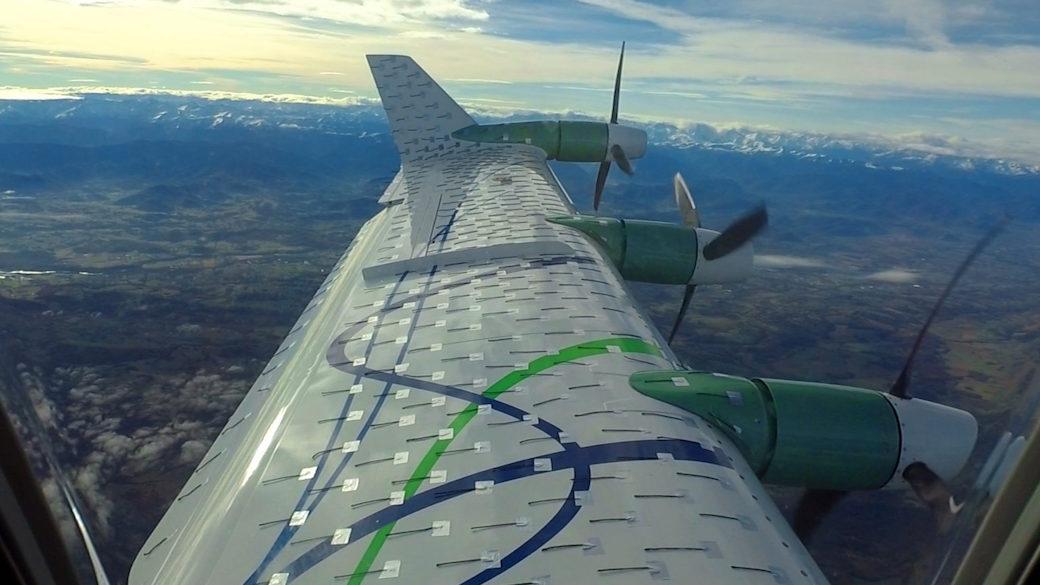Ecopulse Distributed Propulsion Demonstrator Flies On Electric Power

EcoPulse, a modified Daher TBM 700, has conducted its first flight in distributed electric propulsion.
France’s EcoPulse distributed electric propulsion demonstrator—developed by Daher, Safran and Airbus—has conducted its first flight in hybrid-electric mode. The modified single-turboprop TBM 700 flew with its electric propellers powered by a battery and turbogenerator.
The six small propellers on the wing leading edges were activated during the 100-min. test flight from Tarbes, France, on Nov. 29. The flight verified the proper functioning of the demonstrator’s flight-control computer, high-voltage battery pack, hybrid-electric turbogenerator and distributed electric propulsion, says Daher.
The first hybrid flight followed extensive ground tests and 10 hr. of flight tests of the modified aircraft with the electric propulsion system inactive to collect baseline aerodynamic data. The demonstrator is being used to evaluate the operational advantages of hybrid-electric distributed propulsion, with an emphasis on reducing CO2 emissions and noise.
“We confirmed today that this disruptive propulsion system works in flight, which paves the way for more sustainable aviation,” says Safran Chief Technology Officer Eric Dalbies. “The lessons learned from upcoming flight tests will feed into our technology roadmap and strengthen our position as a leader in future all-electric and hybrid-electric propulsive systems.”
The EcoPluse’s wing-mounted propellers are driven by 50-kW Safran electric motors that are powered by an Airbus 350-kW, 800-volt battery pack and a 100-kW Safran turbogenerator. The TBM’s Pratt & Whitney Canada PT6A turboprop is retained and used for takeoff as the electric propulsion system is not sufficiently powerful. In cruise, the turboprop is shut down so the aircraft can fly on electric power.
Different distributed electric propulsion configurations are expected to be tested in flight to measure their effect: all six propellers operating; the outer pair only or the inner four only; with power coming from the battery or the turbogenerator. The inner four propellors are positioned to blow the wing to increase lift coefficient, while the outer pair are used for flight control.
The EcoPulse program is supported by CORAC, France’s Council for Civil Aeronautics Research, and co-financed by the French Civil Aviation Authority DGAC as well as the France Relance and NextGeneration EU post-pandemic economic recovery packages.
Daher is program leader and responsible for system integration. Safran has developed the hybrid-electric propulsion system, including the power distribution and rectifier system and 800-volt power harnesses. DUC Helices supplied the three-blade leading-edge propellers. Airbus developed the battery system, mounted under the fuselage, as well as the flight-control computer for thrust management, lateral stabilization and, eventually, propeller synchrophasing to reduce noise.
“The flight campaign will give Daher invaluable data on the effectiveness of the onboard technologies, including distributed propulsion, high-voltage batteries and hybrid-electric propulsion,” says Daher Chief Technology Officer Pascal Laguerre.
